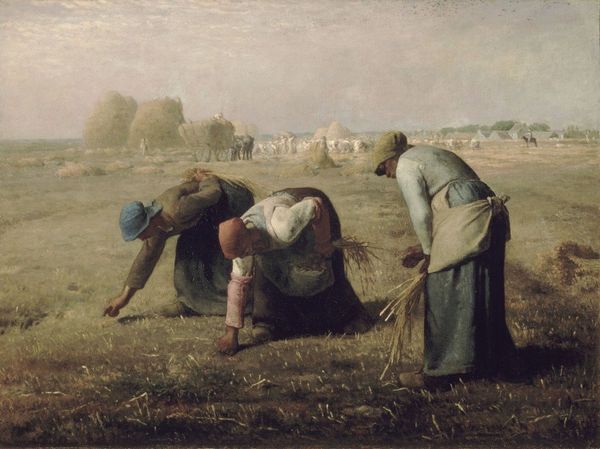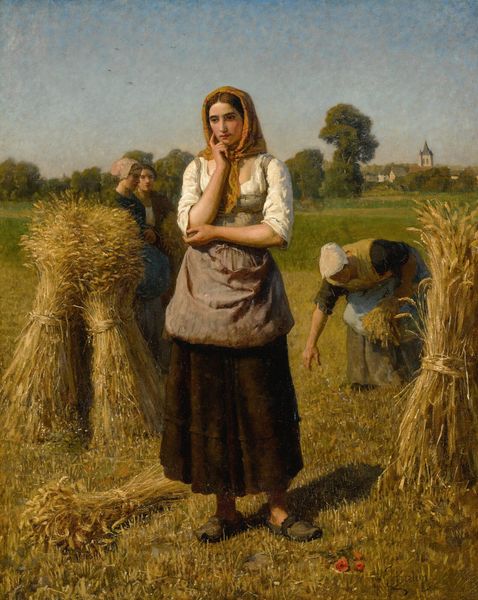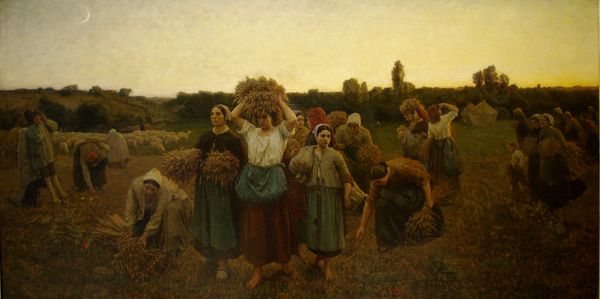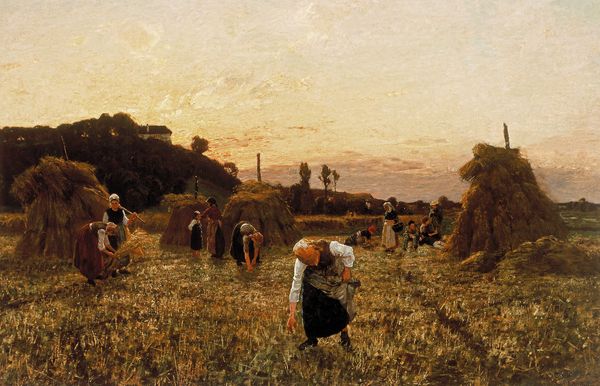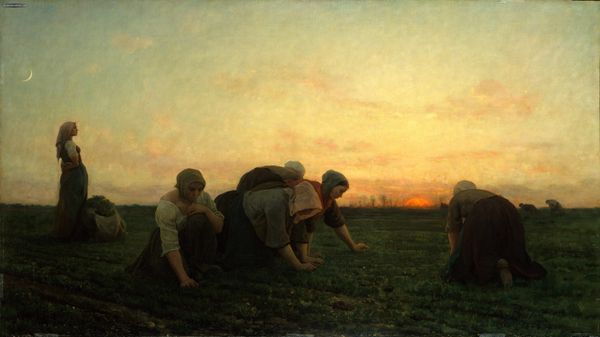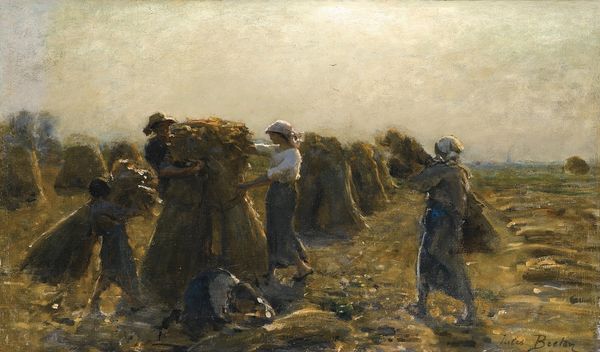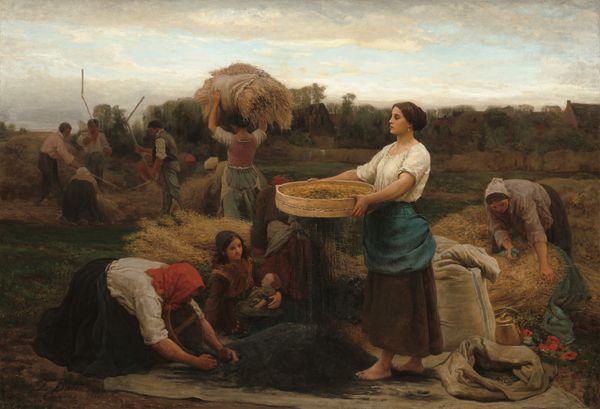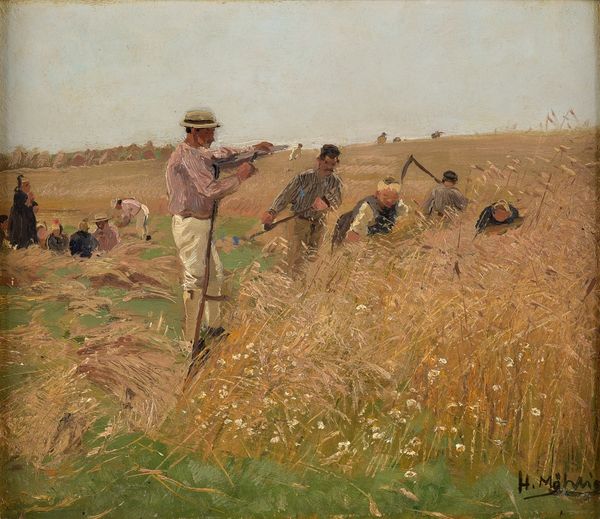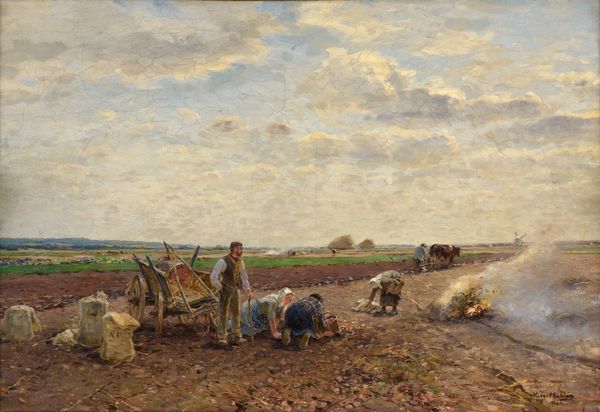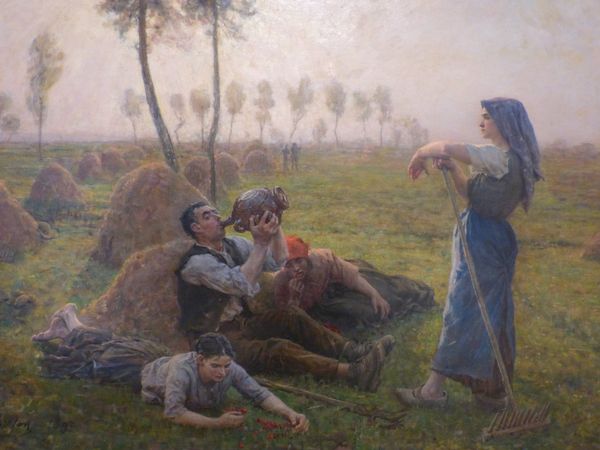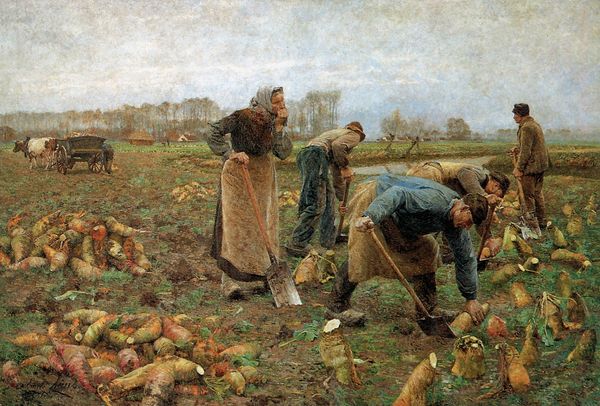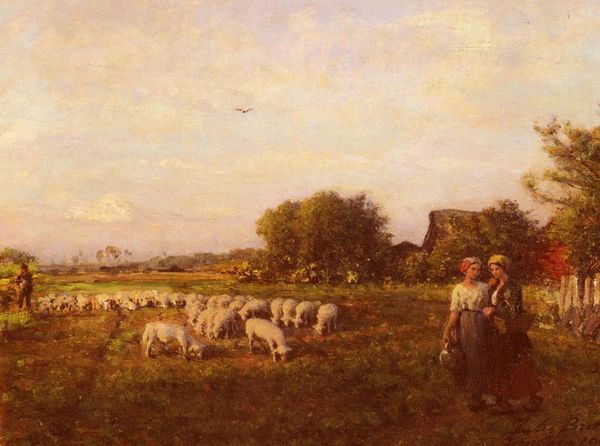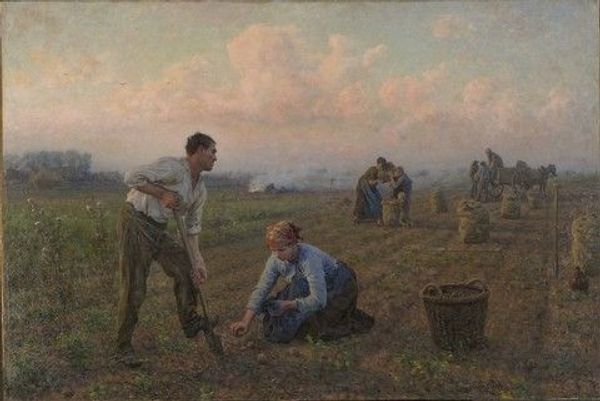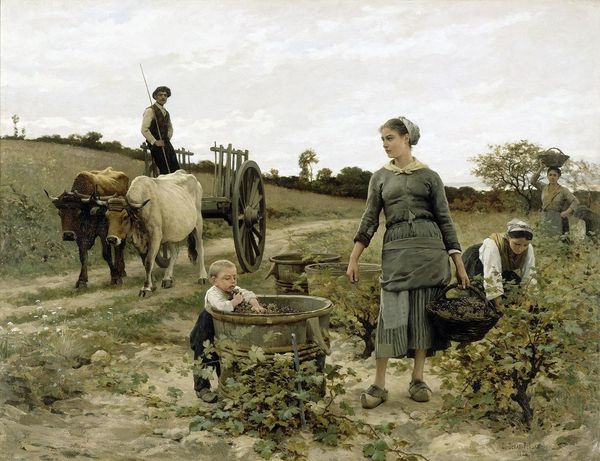
Dimensions: 93 x 138 cm
Copyright: Public domain
Curator: Standing before us is “The Gleaners,” an 1854 oil-on-canvas painting by Jules Breton, now residing at the National Gallery of Ireland. Editor: It's visually striking; the vast field is painted in golden browns, bisected by a horizon line that creates a sense of almost oppressive openness. There’s such a palpable feeling of toil, even exhaustion. Curator: Indeed. The composition is anchored by the rhythmic repetition of figures bending at the waist. Note how Breton organizes these peasant women into a carefully structured foreground, middle ground, and background to communicate a powerful symbolic narrative. Editor: Gleaning, the act of gathering leftover crops after the harvest, speaks volumes about societal structure, doesn't it? Throughout history, it’s symbolized poverty and resilience, embodying the struggles of the marginalized. Curator: Precisely. The women’s bowed postures serve to visually embody their position in society—a kind of social hierarchy explicitly built into the artwork's visual framework. Editor: And what of the figure standing apart on the right of the canvas, accompanied by a dog? There’s an implicit power dynamic there; one perhaps representing overseers? Curator: One might suggest that their clothing designates a different role; yet they also function structurally within the work's organization, providing balance, contrast—a subtle pivot point in the landscape, even as the laborers continue their work in rhythmic synchronicity. Editor: Breton evokes more than just the harshness of rural labor; I detect strains of social consciousness here as well—perhaps Romanticized, perhaps even subtly didactic, but conscious nonetheless. Curator: Its color palette contributes significantly. Those earthen tones, strategically punctuated by the vermillion headscarf of one of the figures, effectively anchor the work's visual interest—as do the touches of blue—pulling the gaze and structuring movement from one element to another within the expansive pictorial space. Editor: Ultimately, the persistence of these historical symbols reminds us of enduring questions about access and the societal burden shared unevenly. Curator: Yes. As an exercise in considering form, the painting invites exploration into Breton’s deliberate orchestration of its constituent parts for maximum, multifaceted meaning.
Comments
No comments
Be the first to comment and join the conversation on the ultimate creative platform.
